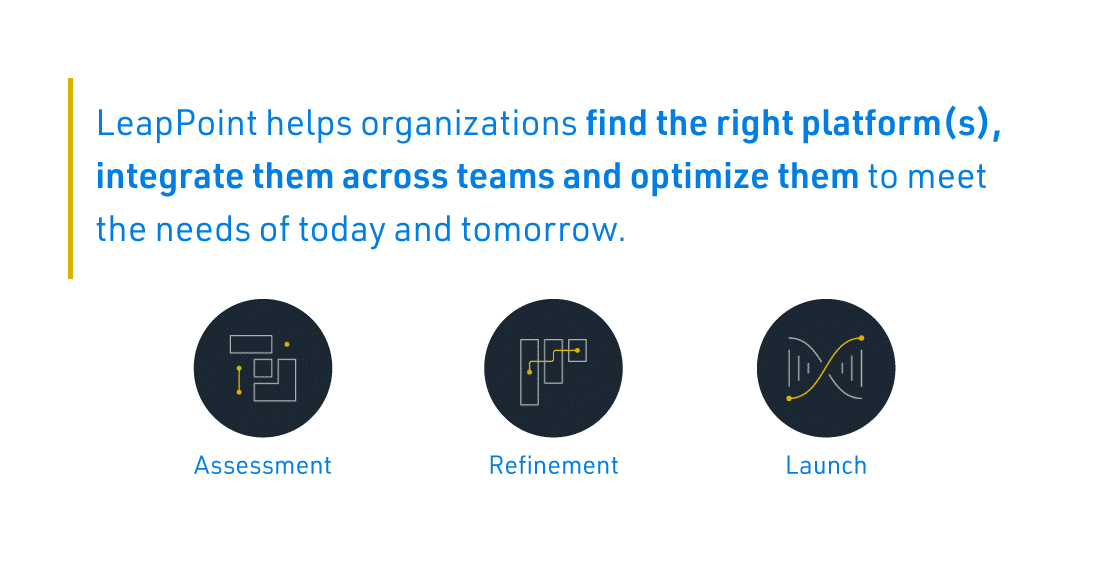Improving Personalization Despite a Cookieless Future
Teams with a Connected MarTech Stack Will Rise Above the Competition
Marketing professionals across the globe are aware of the declining credibility and usefulness of third-party data. Customers are no longer willing to “accept all cookies,” and due to the array of available ad-blocking technology and alternative browsers, they don’t have to. Third-party data fits into the current environment less and less. Plus, it’s often in accurate, typically untrustworthy, and increasingly harder to collect at all.
With that said, offering the personalized experiences today’s buyers demand requires a real-time understanding of who they are, as well as their wants, needs and preferences. So, with the death of third-party data, what are marketers to do?
Connecting First-Party Data Across Systems
First-party data-collected directly from customers-is quickly becoming imperative.
Aside from the collection method, what sets first-party data apart? For starters, marketers can track a prospect’s intent based on certain actions and signals. That data, in partnership with a customer data platform (CDP), allows marketers to make sense of customer behavior and activate channels accordingly.
Not everything is created equal. The capabilities of-and integrations between-the platforms you choose can make or break how you can leverage first-party data. Let’s look at a few examples.
Collecting First-Party Data from Webinars and Virtual Events
You’ve almost certainly heard of ON24 as it relates to webinars, live conferences and the like. It’s a personalized engagement platform that enables marketers to create great experiences for customers and prospects. It also collects first-party data in the process. When an attendee clicks on a link, downloads a resource, or participates in a chat, they’re showing signals that, when tracked, could lead to a viable sales lead.
But, if this first-party data isn’t accurately fed back into your marketing automation platform for follow-up, or passed to your sales team to drive a more informed conversation, simply collecting that data falls flat.
Using Sentiment Data to Improve Messaging and Campaigns
Here’s another example: Do you know what your customers and competitors are saying about you online? Reputation can tell you. Their feedback to action platform captures data directly from users–-across multiple sources-giving marketers a more wholistic view of their brand. The platform’s statistical algorithm captures emotions and sentiments from data and tells marketers not only what isn’t working, but what will work instead. With the right integrations, you can take those insights and quickly plan for targeted campaigns with Adobe Workfront-then activate them through a marketing automation platform (e.g. Marketo) to achieve higher ROI and improved conversions.

How LeapPoint Can Help
Given the challenges marketers face as they look ahead to a cookieless future, having a connected MarTech stack is more important than ever. LeapPoint helps organizations find the right platform(s), integrate them across teams and optimize them to meet the needs of today and tomorrow. Our process can be summarized into a few simple steps:
Step 1: Assessment
LeapPoint will evaluate your existing MarTech stack and assess where you may have gaps in people, processes or technology.
Step 2: Refinement
LeapPoint will help you articulate and refine a new digital marketing strategy from a first-party lens based on the results of our assessment, recommending the right processes, tools and skillsets.
Step 3: Launch
LeapPoint will work alongside you in implementing, integrating and fully launching your new strategy and platforms, ensuring continued success. We will also develop a holistic transformation plan based on our nine core change components to carefully drive adoption and adaption.
Assessment. Refinement. Launch. That’s the core of LeapPoint, of Connected Work. Are you ready to see results for your enterprise? Click the button below-we’d love to talk.



